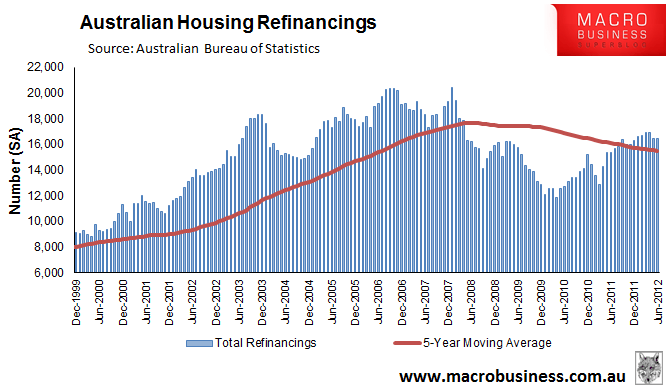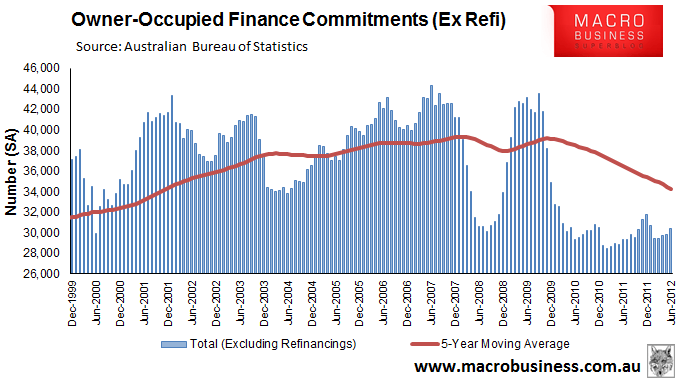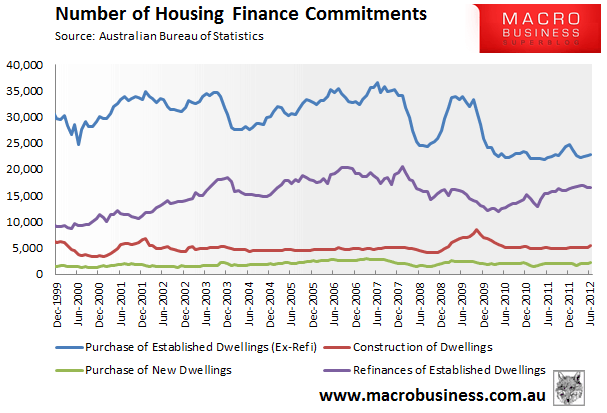
Yesterday, Property Observer published an article on the boom in mortgage refinancings since the Federal Government introduced a ban on mortgage exit fees:
A record 35% of all housing loans written in the last financial year – the 12 months since Treasurer Wayne Swan introduced the ban on mortgage exit fees – were for borrowers refinancing their existing mortgages, rather than buying or building new property, according to ABS housing finance data going back to 1975.
The figures also show that over this period the value of refinanced home loans rose 17% and accounted for all growth in mortgage lending over the 12 months period.
The exit fee ban, which was introduced on July 1 last year and applies to variable interest home loans taken up from this date, has made it easier for borrowers to switch lenders without copping mortgage exit fees in some cases as high as $7,000…
In contrast to the rise in refinancing, loans to buy established properties fell by almost $1 billion, while loans for new construction were up just $24 million compared with the previous 12-month period.
Certainly, mortgage refinancings have experienced strong growth since they bottomed in April 2010. Since that time, the number of monthly refinancings has risen by 38% or 4,555 commitments (see below chart).

The same can’t be said for non-refinancings, with the total number of mortgage commitments (excluding refinancings) up by only 1% or 302 commitments since April 2010 (see below chart).

In fact, loans for the purchase of established dwellings (excluding refinancings), the construction of dwellings, and the purchase of new dwellings have all flat-lined, with refinancings being the only segment to experience any significant growth (see below chart).

While the boom in refinancings of existing loans might be beneficial to mortgage sales people and loan agents, who earn income via commissions, they can largely be ignored from an analyst’s perspective, as they do not represent a lift in the demand for housing, and will have negligible direct impact on the overall level of economic activity.
Twitter: Leith van Onselen. Leith is the Chief Economist of Macro Investor, Australia’s independent investment newsletter covering trades, stocks, property and yield. Click for a free 21 day trial.

